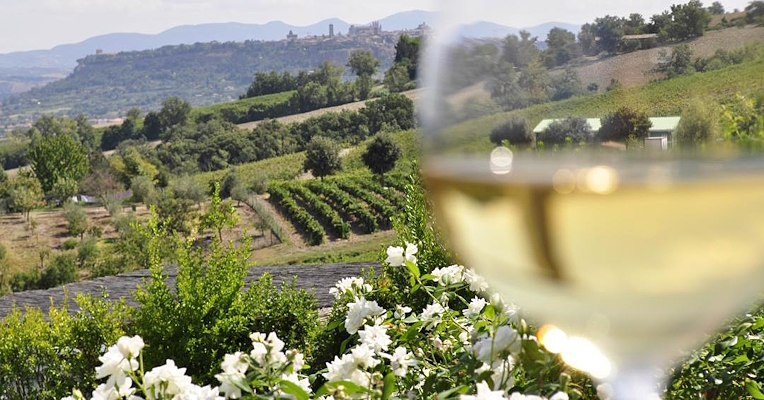Umbria in a Glass - Umbria in a Glass

Gamay (or Gamay del Trasimeno)
Gamay del Trasimeno has been present in Umbria since at least the mid-19th century, cultivated almost exclusively in the large area around Lake Trasimeno in the province of Perugia.
Recent studies have shown that it is the same grape variety known in Sardinia as Cannonau, in Veneto as Tai Rosso, in France as Grenache and in Spain as Garnacha.
The vine seems to have been introduced thanks to Eleonora Alarcon Y Mendoza, who is said to have brought some vines as dowry to her future husband Fulvio Alessandro della Corgna, the last lord of Castiglione del Lago, as a good omen for their marriage.
Vinified in purity, Gamay del Trasimeno produces a full-bodied wine with a ruby red colour, characterised by fresh and rather fruity aromas.
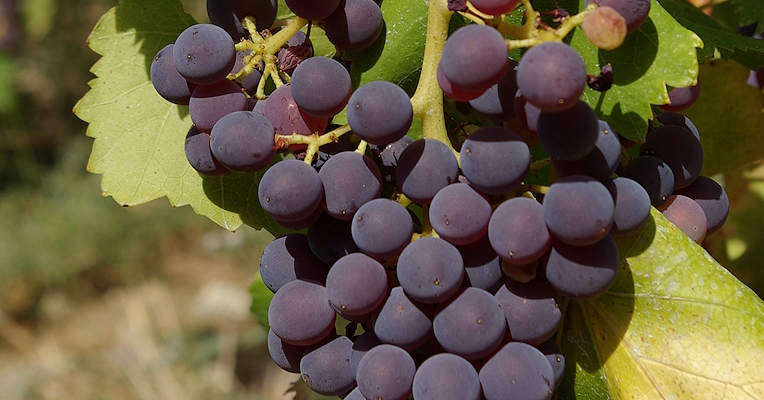
Sagrantino – Montefalco
Sagrantino, cultivated almost exclusively in the Montefalco area, is an ancient grape variety, traces of which date back as far as Roman times. Many identify it with the prized “itriola” grape mentioned by Pliny the Elder in the 1st century AD.
As various documents testify, from the year 1000 onwards, the wine produced from this grape variety had great fortune, so much so that it was even considered a prestigious gift for princes and pontiffs.
The origins of the name probably derive from the version of the wine, consumed during religious celebrations and festivities, obtained from raisin grapes.
Since 1972, the process of rediscovering the vine has led to the affirmation of its dry version. In 1979, Sagrantino di Montefalco was recognised as a DOC wine, and in 1992 it became the twelfth Italian wine to obtain DOCG status. Today, it is considered one of the symbols of Italian wine in the world.
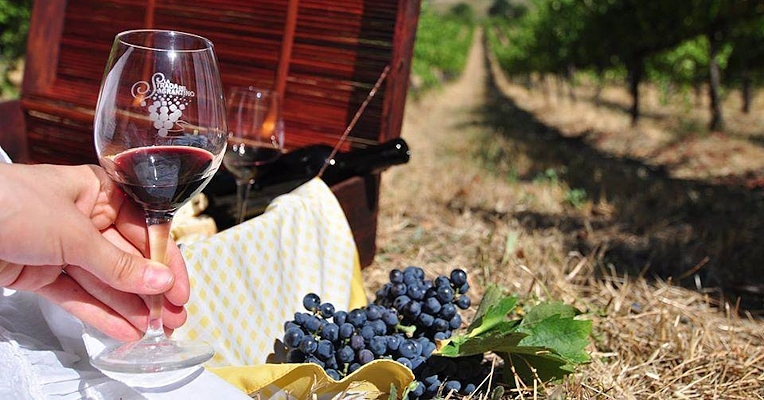
Trebbiano - Spoleto
Cultivated mainly in lowland areas, Trebbiano is a vine historically linked to the territory of the municipality of Spoleto and also widespread in neighbouring municipalities.
Its origins are not known, but already in the 1st century A.D., the Latin poet Martial sang the praises of Spoleto wine, comparing it to Campania’s Falerno, while in the 2nd century A.D., the Greek scholar Athenaeus extolled the qualities of Spoleto wine’s gold-like colour.
In later eras, its cultivation and trade were of great importance to the local economy. The Spoleto statutes of 1296, 1347 and 1542 contain provisions for the protection of the vine and regulations for the transport and storage of wine.
The first real references to the presence of Trebbiano in the Spoletino area date back to the 15th century. However, over time the cultivation and production of this variety of wine gradually declined, until its almost complete extinction until the early 2000s, when interest in this indigenous grape variety re-emerged, thanks in part to the recognition of the “Spoleto” DOC designation.
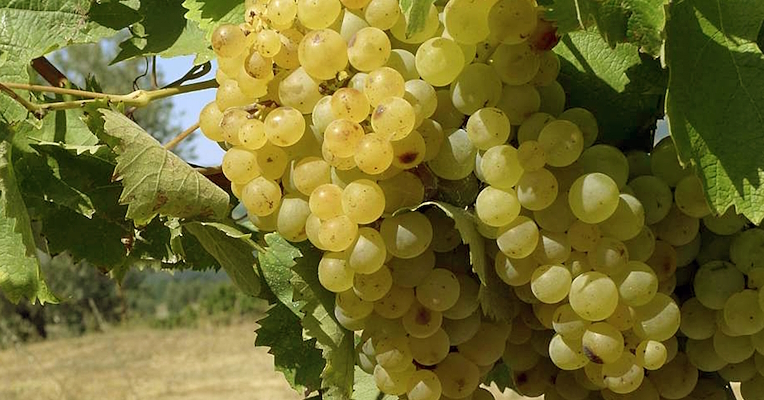
Ciliegiolo - Narni
Numerous scholars maintain that Ciliegiolo is an indigenous grape variety, cultivated since 1200 in the regions of central Italy. Another hypothesis, now less accredited, maintains that it was imported in the 19th century from Spain.
It most likely derives from the same ancient variety of “vitis vinifera” from which Sangiovese is also descended.
Ciliegiolo is present in only a few areas of the region but is particularly appreciated in Narni and the Amerini Hills. In these areas, the grape is not only used for blending wines, but also vinified in purity to produce young, fragrant wines. With the introduction of the DOC Amelia and IGT Narni regulations, strict processing standards were adopted that led to the production of fresh, elegant wines with a typical intense ruby red colour, characterised by a fruity aroma that, as the name suggests, is reminiscent of cherries.
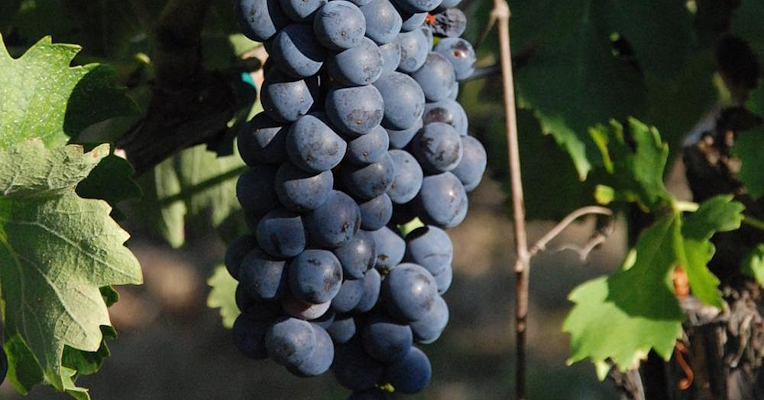
Tostolello – Amelia
In the selection of native Umbrian grape varieties, Tostolello is characteristic of the Amerino territory, the only area where this wine cultivar is present.
Its main characteristic is its very limited diffusion, which makes the wine produced from this grape one of the most sought-after.
There are no written records of its presence in the past, and only in a treatise on agriculture from the early 1900s is the “Tostela” vine mentioned, yet it is not certain whether this is related to Tostolello. Oral evidence gathered locally dates the cultivation of the mother plants back to a vineyard planted in the early 20th century.
Since 2022, the variety has been listed in the National Atlas of Indigenous Genotypes, Grape Varieties and Wines of the Territory.
Straw yellow in colour with slightly green highlights, the aromatic profile of Tostolello possesses specific and recognisable characteristics.
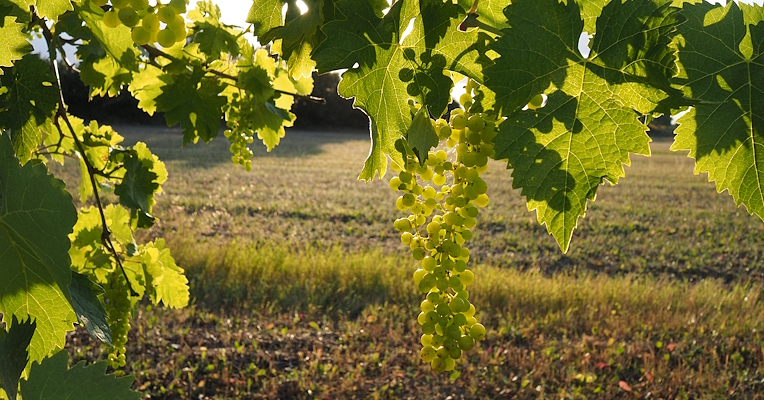
Grero - Todi
A particularity of Todi’s wine production is the Grero, the name by which the “Greco nero” variety is locally known. News of this cultivation dates back to the end of the 19th century, as reported in the Annuariogenerale per viticoltura ed enologia (General Yearbook for Viticulture and Oenology) in the chapter dedicated to “I vitigni e ivinidell’Umbria” (Umbria’s Grape Varieties and Wines), where it is stated that one of the black grapes cultivated in Umbria, specifically in Todi and Città di Castello, was “Greco”.
However, the presence of wines in this area is much older. Already Pliny the Elder in the 1st century A.D. mentioned Tudernis among the vines present only in this area of Etruria, which was later identified with Grechetto di Todi, obtained from a different white grape variety.
Grero, when vinified as a single varietal, gives rise to a ruby-coloured wine with violet reflections with a balanced profile, appreciable above all in the young product.
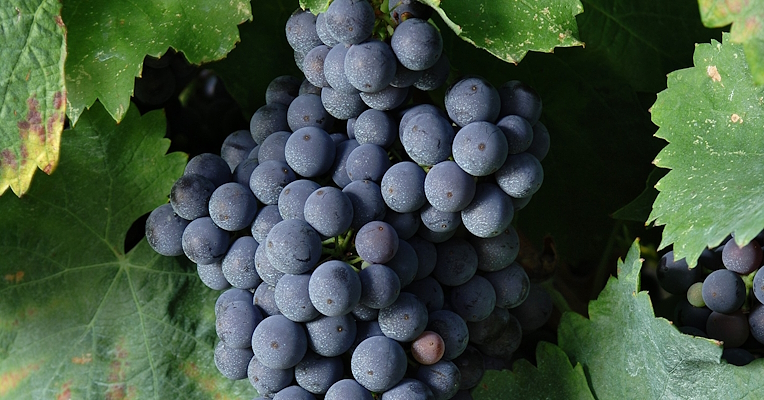
Grechetto - Orvieto
Grechetto di Orvieto is one of the oldest vines in Italy, and also belongs to the Greci family, wines imported to our peninsula at different times but from the same geographical area. Although it has traits in common with that of Todi, due to the fact that it belongs to the Greci family, since 2003 it has been recognised as genetically different.
The vineyards that produce it are located on both sides of the Paglia River, which flows through the city of Orvieto towards the Tiber, on tufaceous soils that characterise this area. The rocky substratum contributes profoundly to the quality of the local terroir, but also lends itself to the construction of cellars, dug into the rock.
The Etruscans had already realised that, in the coolness of these caves, fermentation was only completed after several months, leaving the wine with a residual sugar that greatly contributed to its success.
The wine obtained from its grapes, recognised by the Orvieto DOC denomination, has a more or less intense straw yellow colour, a delicate and pleasant bouquet, a clean, fresh profile and moderate acidity.
